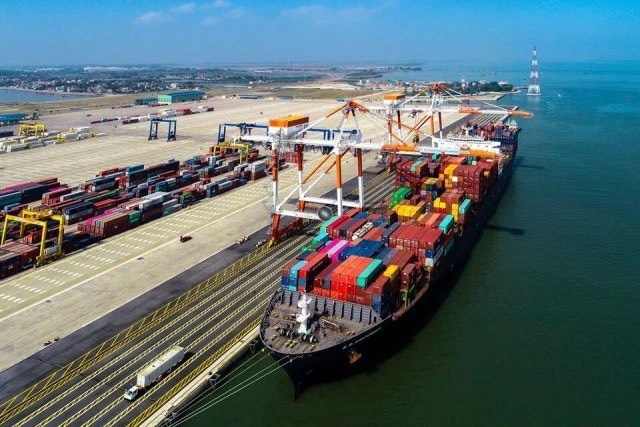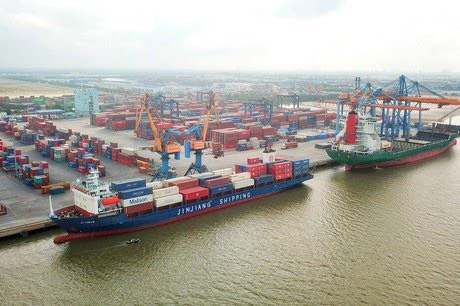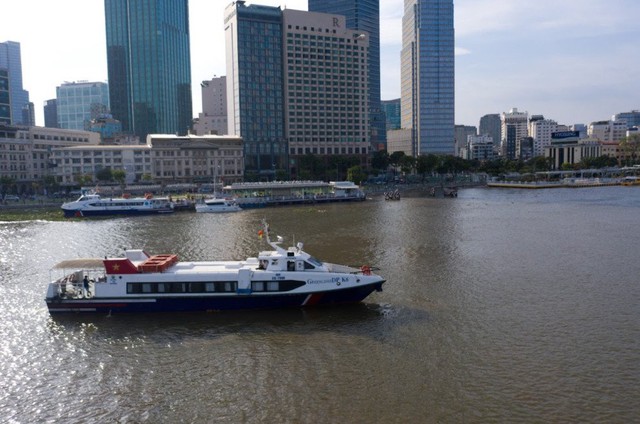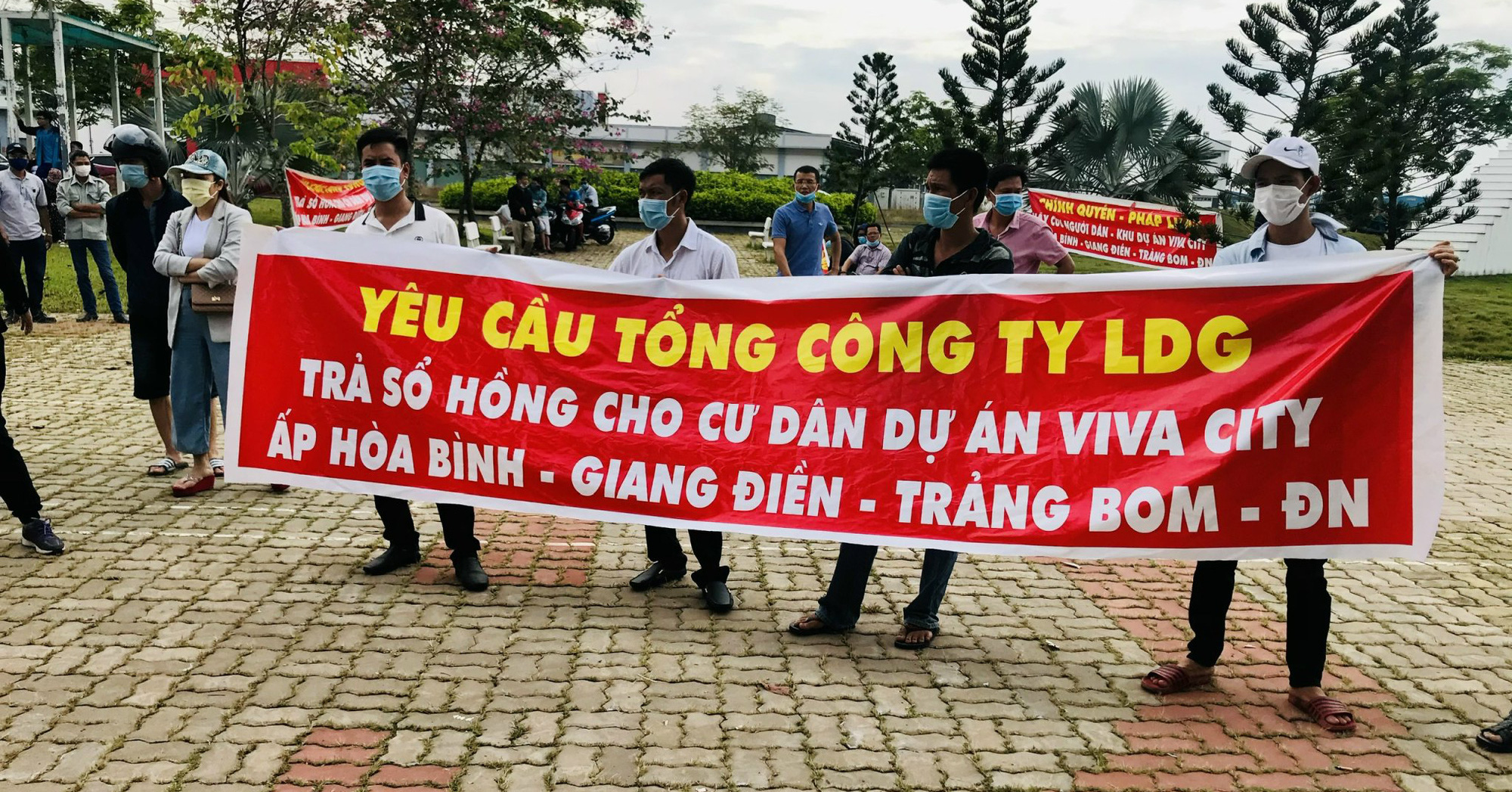Connecting the waterway transport system to develop the marine economy
The bright spot at the two ends of the country
Together with Hai Phong seaport, Ba Ria-Vung Tau forms two important poles in Vietnam’s seaport development with great advantages such as having both natural conditions for port development and a large port rear. From these two seaports has formed an important economic corridor connecting the most important economic centers of the country (Hanoi and Ho Chi Minh City) and international connections with China and Cambodia.
In the northern region, Hai Phong is one of the few localities with a national key traffic hub with the convergence of all five types of traffic: road, railway, air, inland waterways and waterways. sea way. The transport system plays an important role in the development of not only the port city, but also the key economic region of the North and the country.
The central government has always placed the marine economy as a pillar for Hai Phong to develop an economic development strategy in the process of renovation and international integration. On that basis, Hai Phong has specifically identified six key marine industries and fields of the city. First of all, to develop the port system, port services and shipping, to strive to become a major maritime service and shipping center of Vietnam, with a position in Southeast Asia; develop marine industry, economic zones, coastal industrial zones, develop Dinh Vu – Cat Hai economic zone into a modern economic center of the country and the main door opening to the sea, and at the same time bring Hai Phong becoming the largest shipbuilding and repairing center in Vietnam.
With the determination to realize the aspiration to rise up, Hai Phong is trying to make a stronger breakthrough in investment in completing, developing and modernizing transport infrastructure, affirming its role as an important traffic hub. important for the whole country, the main door to the sea of the northern localities and the two economic corridors between Vietnam and China.

Seaports have formed an important economic corridor connecting the most important economic centers of the country
Prominent in the South, Ba Ria-Vung Tau is a “candidate” that meets all conditions to become a gateway seaport due to its advantages in geographical location and important role in the economic region. southern focus. In which, the Cai Mep-Thi Vai port system plays the role of an international transshipment port serving the whole Southeast region, the South Central region, the Central Highlands and the Mekong Delta. Over the years, with this orientation and foresight, from the central to the local level, the Cai Mep – Thi Vai port system has been shaped along the Thi Vai river.
According to Vice Chairman of Ba Ria-Vung Tau Provincial People’s Committee Nguyen Cong Vinh, said: “Bien Hoa – Vung Tau Expressway, Phuoc An Bridge, Ring Road 4 are all key projects with breakthroughs to connect traffic. At the same time, the province also invests in the Cai Mep-Thi Vai inter-port route connecting all ports and industrial zones into the common transport system; urban and inter-district roads are also promoted by the province. speed up the investment progress, implement construction synchronously with inter-regional traffic projects, this helps to ensure smooth and connected traffic, and promote and exploit the strengths and potentials of the localities of the country. province in the future, linking with other localities of the southern key economic region”.
Remove “difficulty” for Central, Mekong Delta
The central key economic region has a particularly important position and role in terms of national defense, security and socio-economic development for the whole country. The region currently has 4 coastal economic zones, 4 deep-water ports and 4 airports, which are very convenient for industrial and logistics development associated with seaports and tourism.
Over the past time, the Ministry of Transport has determined the viewpoint and mechanism for mobilizing and using investment resources to develop traffic infrastructure in the central key economic region to ensure synchronous, modern, and sustainable development. focus and focus to develop the region’s socio-economic as well as create a driving force to spread and promote the development of neighboring areas. Thereby, the infrastructure system has been gradually upgraded.

It is necessary to maximize potentials and advantages, especially promoting intra-regional and regional linkages
However, compared with the northern and southern key economic regions, the central key economic region is currently a “low-lying area.” Therefore, localities have requested the Central Government to direct early investment in completing the North-South expressway, including the Quang Ngai-Binh Dinh-Phu Yen section and the coastal route connecting the central provinces, to create favorable conditions. goods circulation, connecting tourist destinations between Central Coast provinces – Central Highlands.
The Mekong Delta is the largest food producing and exporting region in Vietnam. However, the limitations of transport infrastructure have disrupted the supply chain, making the region’s economic growth less than adequate.
“The Mekong Delta is the largest food production and export region in Vietnam. However, the limitations of waterway and land transport infrastructure make the regional integration plan face many difficulties and limitations. This factor has disrupted the supply chain, making the economic growth of this area not really commensurate with what nature favors” – Chairman of Long An Provincial People’s Committee Nguyen Van Ut asked.

Localities need to be more active in proactively removing obstacles
Mr. Ut said that in order to solve this problem, right now, the Government needs to direct localities, ministries and branches to realize the development planning of the Mekong Delta in the period of 2021-2030, with a vision to 2050, in order to promote it. maximize potentials and advantages, especially promoting intra-regional and regional linkages.
In addition, the Ministry of Transport should urgently prioritize research and consider building a master investment plan for medium- and long-term transport projects in the Mekong Delta region, in which, note when opening new traffic routes. must be consistent with reality, avoid disrupting the financial plan of the implemented BOT traffic projects, affecting the project’s efficiency.
However, local governments need to be more active in proactively removing obstacles to development in their localities, especially the clearance of infrastructure investment projects, ensuring the progress of handing over the site to the construction units so that the projects can be on schedule, put the works into use, and be ready for the plan to connect and link the Mekong Delta towards sustainable development.
* Invite readers to watch programs broadcast by Vietnam Television on TV Online and VTVGo!
at Blogtuan.info – Source: vtv.vn – Read the original article here



